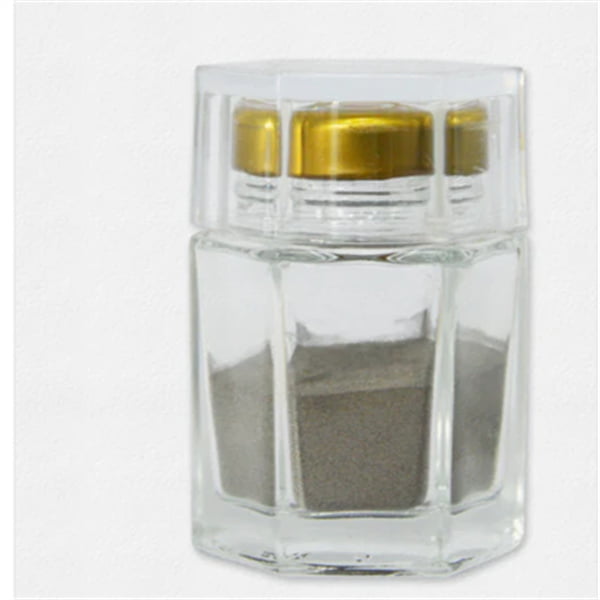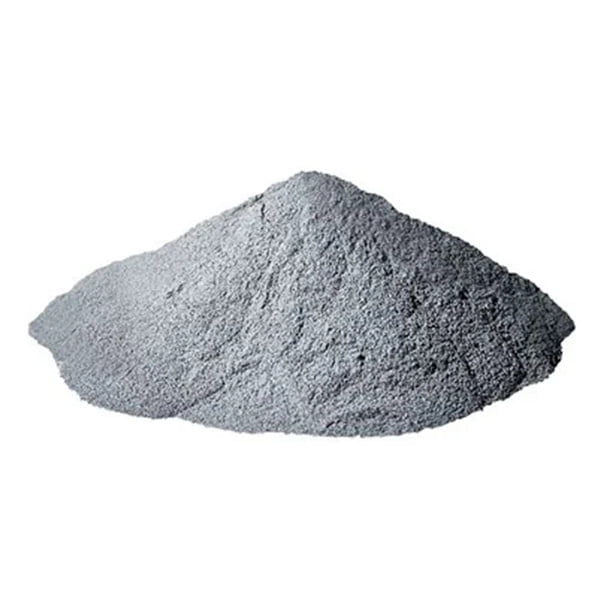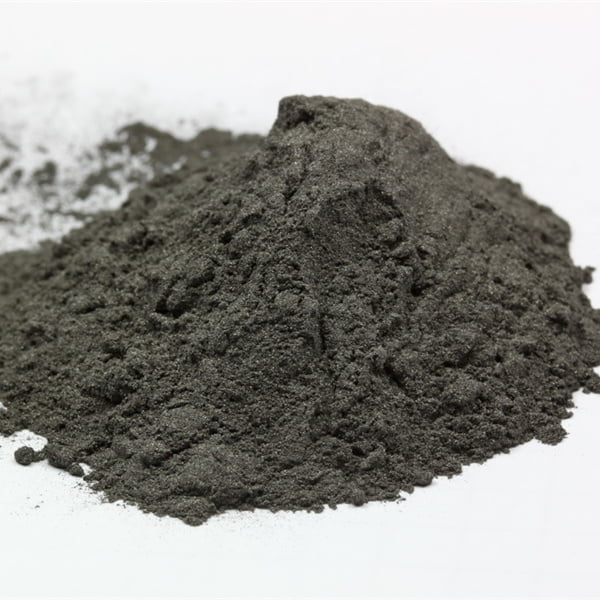430 metal power for PM
Table of Contents
The world of metal manufacturing is vast and ever-evolving. But within this intricate landscape lies a process that thrives on precision and efficiency: Powder Metallurgy (PM). This technique involves transforming metal powders into intricate shapes through a series of steps like compaction and sintering. And when it comes to selecting the right metal powder for PM, 430 metal power for PM emerges as a popular and versatile choice.
But why is 430 metal powder so well-suited for PM applications? Let’s delve deeper and explore the world of this powerful material.
the Power of 430 metal power for PM
430 stainless steel powder, as the name suggests, is a metallic powder derived from 430 grade stainless steel. This specific grade boasts a unique chemical composition, primarily consisting of:
- Iron (Fe): The backbone of the material, providing strength and formability.
- Chromium (Cr): The magic ingredient that grants stainless steel its corrosion resistance.
- Nickel (Ni): Enhances strength and ductility.
- Manganese (Mn): Improves hardenability and wear resistance.
- Silicon (Si): Contributes to deoxidation and high-temperature strength.
This specific blend of elements imbues 430 metal powder with a compelling set of properties:
- Moderate Strength and Ductility: 430 metal powder offers a good balance between strength and the ability to be shaped without breaking. Imagine it like a skilled acrobat – powerful yet flexible.
- Good Formability: Think of it like molding clay for the world of metals. 430 metal powder readily takes on complex shapes during the PM process, allowing for intricate designs.
- Magnetic: Unlike some stainless steel grades, 430 metal powder is attracted to magnets. This can be a beneficial property for certain applications.
- Cost-Effective: Compared to other stainless steel grades, 430 metal powder offers a more budget-friendly option, making it an attractive choice for cost-conscious projects.
Key takeaway: 430 metal powder strikes a sweet spot between affordability, good strength, and excellent formability, making it a valuable player in the PM arena.

A Gallery of Metal Powder Models
Now that we’ve grasped the essence of 430 metal powder, let’s explore some specific models available in the market. Here are 10 popular options, each boasting unique characteristics:
| Model Name | Description |
|---|---|
| Höganäs AM 301 | This water-atomized powder offers excellent flowability and packing density, ideal for intricate PM parts. |
| Carpenter AMCorr 430 | Boasting superior corrosion resistance compared to standard 430 powders, this model caters to applications demanding enhanced environmental protection. |
| AP Powder 430 | This nitrogen-atomized powder prioritizes high purity and low oxygen content, making it suitable for demanding PM applications. |
| Höganäs Distaloy 430 | This gas-atomized powder delivers a good balance between cost and performance, making it a popular choice for general-purpose PM parts. |
| AMCP AM 430 | This water-atomized powder excels in applications requiring tight dimensional tolerances due to its exceptional dimensional control. |
| GKN Hoeganaes AM 302 | Similar to AM 301, this water-atomized powder offers excellent flowability and packing density, catering to complex PM geometries. |
| Arcast 430 | This nitrogen-atomized powder prioritizes high compressibility, leading to denser PM parts with enhanced mechanical properties. |
| DSH Serotom 10 | This water-atomized powder boasts improved toughness compared to standard 430 powders, making it suitable for applications requiring some impact resistance. |
| Höganäs AM 101 | This water-atomized powder offers a coarser particle size distribution compared to other models, impacting flowability but potentially reducing material costs. |
| AMCP AM 430L | This low-carbon variant of AM 430 provides improved weldability, making it ideal for PM parts requiring subsequent welding processes. |
Remember: This list represents just a fraction of the available 430 metal powder models. Each manufacturer often offers variations with specific attributes catering to diverse PM applications.
Applications of 430 metal power for PM
The versatility of 430 metal powder translates into a wide range of applications across various industries. Here are some prominent examples:
- Automotive Components: From intricate gears and transmission parts to brackets and fasteners, 430 metal powder finds its place in numerous automotive applications. Its good formability allows for the creation of complex shapes, while its moderate strength makes it suitable for non-critical components. Compared to machined parts, PM components made from 430 metal powder can offer advantages like near-net-shape manufacturing, reducing material waste.
- Aerospace Parts: The aerospace industry demands materials that are lightweight yet robust. 430 metal powder, with its good strength-to-weight ratio, comes into play for certain aerospace components. However, it’s important to note that due to its lower corrosion resistance compared to other stainless steel grades, 430 metal powder might not be suitable for all aerospace applications, particularly those exposed to harsh environments.
- Consumer Goods: From kitchen appliance parts like blender blades to hardware components like doorknobs and hinges, 430 metal powder finds its way into various consumer goods. Its cost-effectiveness and ability to be formed into intricate shapes make it an attractive choice for mass-produced items.
- Medical Devices: While not the first choice for implantable medical devices due to its lower corrosion resistance, 430 metal powder can be used for certain sterilized medical instruments due to its good formability and affordability. However, stringent cleaning and sterilization processes are crucial to ensure patient safety.
- Electrical Components: The magnetic properties of 430 metal powder make it suitable for specific electrical components. For instance, it can be used in certain types of relays and switches where magnetism plays a functional role.
Key takeaway: The diverse applications of 430 metal powder highlight its versatility and cost-effectiveness in the PM landscape. From automotive parts to consumer goods, this material offers a compelling combination of formability, moderate strength, and affordability.

Standards, Sizes, and Grades
When selecting 430 metal powder for a specific PM application, understanding its specifications is crucial. Here’s a breakdown of key factors to consider:
- Standards: Reputable manufacturers adhere to industry standards like ASTM International (ASTM) or the Metal Powder Industries Federation (MPIF). These standards ensure consistent quality and properties of the metal powder. Common standards for 430 metal powder include ASTM B294 and MPIF Standard 35.
- Particle Size Distribution: The size and distribution of metal powder particles significantly impact flowability, packing density, and the final properties of the PM part. 430 metal powder is typically available in a range of particle sizes, from fine powders ideal for intricate geometries to coarser powders offering improved flowability for faster production cycles.
- Grades: While 430 stainless steel powder itself is a specific grade, some manufacturers might offer variations within this category. For instance, low-carbon variants (like AMCP AM 430L) might be available for applications requiring improved weldability.
Additional Considerations: Beyond the factors mentioned above, other considerations like apparent density, tap density, and flow rate might be relevant depending on the specific PM process and desired part characteristics. Consulting with a reputable metal powder supplier is crucial to ensure you select the optimal material for your application.
Advantages and Limitations of 430 Metal Powder
Every material has its own set of strengths and weaknesses. Let’s delve into the advantages and limitations of 430 metal powder for PM:
Advantages:
- Cost-Effective: Compared to other stainless steel grades used in PM, 430 metal powder offers a more budget-friendly option. This makes it a compelling choice for cost-conscious projects.
- Good Formability: As mentioned earlier, 430 metal powder readily takes on complex shapes during the PM process. This allows for the creation of intricate parts that might be challenging or expensive to produce using traditional machining methods.
- Moderate Strength and Ductility: 430 metal powder offers a good balance between strength and the ability to be shaped without breaking. This makes it suitable for a wide range of non-critical components.
- Near-Net-Shape Manufacturing: PM allows for the creation of parts close to their final dimensions, minimizing material waste compared to traditional machining methods.
- Magnetic Properties: For specific applications where magnetism plays a functional role, the magnetic nature of 430 metal powder can be an advantage.
Limitations:
- Lower Corrosion Resistance: Compared to higher-grade stainless steel powders, 430 metal powder offers less resistance to corrosion. This limits its suitability for applications exposed to harsh environments or requiring high levels of corrosion protection.
- Not Heat Treatable: Unlike some other metal powders, 430 metal powder cannot be significantly strengthened through heat treatment processes. This limits its applicability for components requiring exceptional mechanical properties.
- Material Properties Can Vary: Powder properties like flowability and packing density can vary slightly between manufacturers and even between different batches from the same supplier. This necessitates careful selection and potentially conducting trial runs to ensure consistent results during PM production.
Making an Informed Choice: Understanding these advantages and limitations is crucial for making an informed decision about whether 430 metal powder is the right choice for your PM application. When in doubt, consulting with a material engineer or a reputable metal powder supplier can provide valuable guidance.
Cost Considerations
The cost of 430 metal powder can vary depending on several factors, including:
- Manufacturer: Different manufacturers might have slightly varying pricing structures.
- Quantity: Typically, bulk purchases offer a lower price per unit compared to smaller quantities.
- Particle Size Distribution: Finer powders often command a premium compared to coarser ones due to the increased processing involved.
- Grade: Variations within the 430 metal powder category, like low-carbon versions, might have slightly different pricing.
Providing a Specific Cost: Unfortunately, pinpointing an exact cost for 430 metal powder is challenging due to the factors mentioned above. However, a general range can be helpful. As of today (April 24, 2024), the estimated price for 430 metal powder can range from $5 to $15 per kilogram, with the actual cost depending on the specific factors mentioned earlier.
Remember: It’s crucial to contact metal powder suppliers directly to obtain the most accurate pricing information for your specific needs. Many suppliers offer quote request forms on their websites, allowing you to specify the desired quantity, particle size, and grade to receive a tailored quotation.
Suppliers and Distributors
Sourcing high-quality 430 metal powder is essential for successful PM projects. Here’s a glimpse into the world of suppliers and distributors:
- Metal Powder Manufacturers: Reputable metal powder manufacturers often have a global presence and offer a variety of 430 metal powder options with varying characteristics. Some prominent names include Höganäs, Carpenter Additive Powder Products, and AP Powder.
- Metal Powder Distributors: These companies act as intermediaries, sourcing metal powders from various manufacturers and distributing them to end users. They can be a valuable resource for smaller PM operations that might not require large quantities of material.
Finding the Right Supplier: When selecting a supplier for 430 metal powder, consider factors like:
- Reputation: Look for established companies with a proven track record of supplying high-quality metal powders.
- Product Range: Ensure the supplier offers 430 metal powder with the desired specifications, including particle size distribution and grade.
- Technical Support: A reputable supplier will have a team of technical experts who can provide guidance on selecting the right material for your application.
- Pricing: Compare quotes from multiple suppliers to ensure you’re getting a competitive price.
- Minimum Order Quantities: Be aware of any minimum order quantities imposed by the supplier, especially if you’re starting with a smaller PM project.
By considering these factors, you can find a reliable supplier who can provide the 430 metal powder you need for your PM endeavors.

FAQ
Here are some commonly asked questions regarding 430 metal powder for PM:
Q: What are the alternatives to 430 metal powder for PM?
A: Several alternative metal powders can be used in PM, depending on the desired properties. Some options include:
- 316L stainless steel powder: Offers superior corrosion resistance compared to 430 but comes at a higher cost.
- 17-4 PH stainless steel powder: Provides high strength and good corrosion resistance but requires specific post-processing steps.
- Low-alloy steel powders: Offer a balance between cost and performance but might not be suitable for applications demanding high corrosion resistance.
Q: Can 430 metal powder be machined after the PM process?
A: Yes, 430 metal powder parts can be machined after the PM process to achieve tighter tolerances or create specific features. However, the machinability might be slightly lower compared to wrought 430 stainless steel due to the inherent porosity of PM parts.
Q: Is 430 metal powder safe for food contact applications?
A: The specific safety of PM parts made from 430 metal powder for food contact applications depends on several factors, including:
- Density: The final density of the PM part plays a crucial role. Highly dense parts with minimal porosity are generally considered safer for food contact as they minimize the risk of food particles becoming trapped and harboring bacteria.
- Surface Finish: A smooth and well-finished surface on the PM part is essential for food contact applications to minimize areas where bacteria can accumulate.
- Regulations: Different countries and regions might have specific regulations governing the use of PM parts in food contact applications. It’s crucial to adhere to the relevant regulations to ensure the safety of your product.
Consulting with a qualified materials engineer or a regulatory expert is highly recommended to determine if 430 metal powder from PM is suitable for your specific food contact application.
Q: What are the future prospects for 430 metal powder in PM?
A: The future of 430 metal powder in PM appears promising. Here are some reasons for optimism:
- Continuous Improvement: Metal powder manufacturers are constantly innovating and developing new 430 metal powder variants with improved properties, potentially expanding its range of applications.
- Cost-Effectiveness: The affordability of 430 metal powder compared to other options makes it an attractive choice for manufacturers, especially in a cost-conscious environment.
- Advancements in PM Technology: As PM technology continues to evolve, the ability to create even more complex and high-performance parts using 430 metal powder could become a reality.
Share On
MET3DP Technology Co., LTD is a leading provider of additive manufacturing solutions headquartered in Qingdao, China. Our company specializes in 3D printing equipment and high-performance metal powders for industrial applications.
Inquiry to get best price and customized Solution for your business!
Related Articles
About Met3DP
Recent Update
Our Product
CONTACT US
Any questions? Send us message now! We’ll serve your request with a whole team after receiving your message.

Metal Powders for 3D Printing and Additive Manufacturing
COMPANY
PRODUCT
cONTACT INFO
- Qingdao City, Shandong, China
- [email protected]
- [email protected]
- +86 19116340731

















